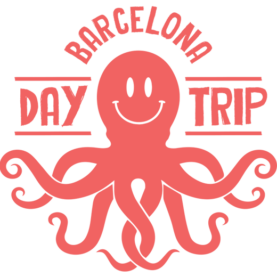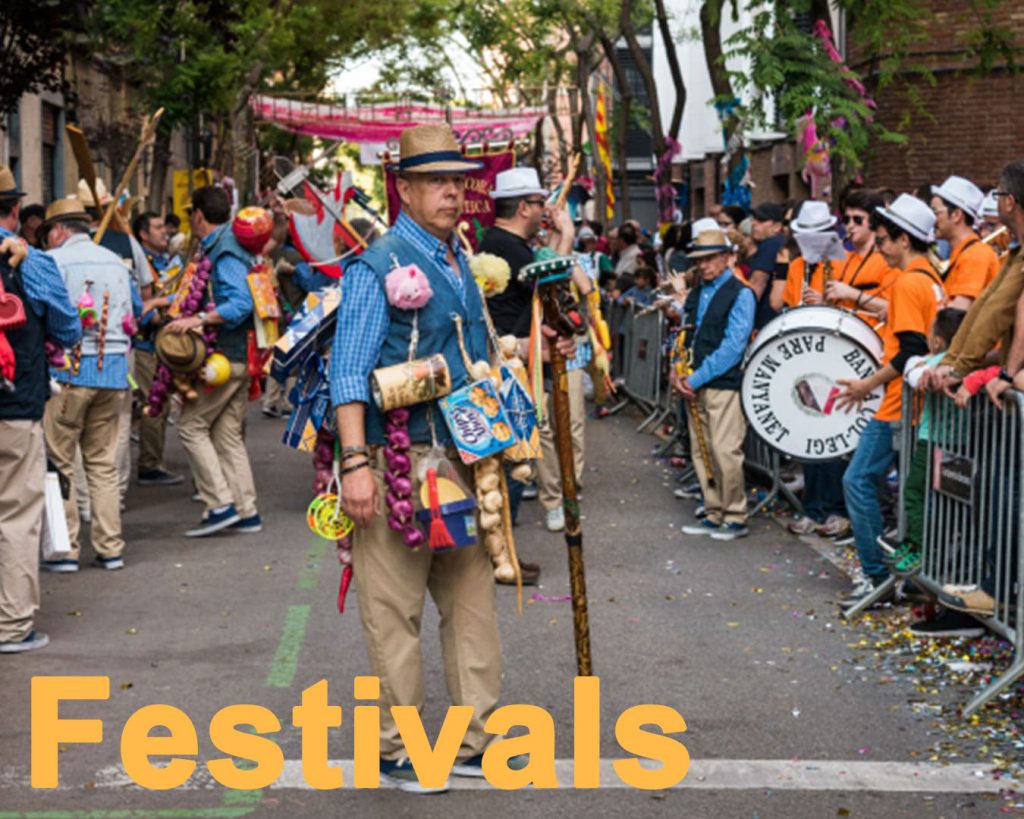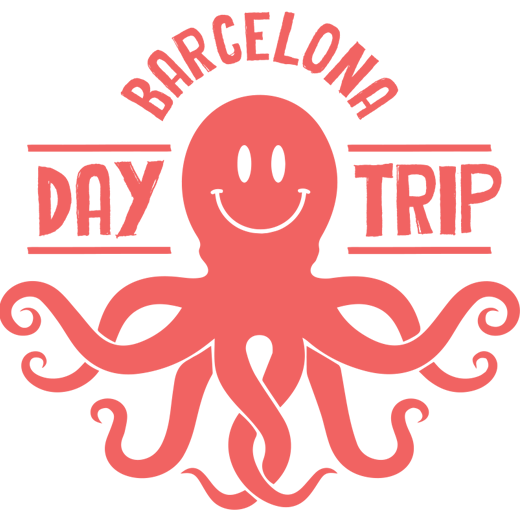List of festivals and street parties in Barcelona 2021.
Catalonia and Barcelona are known worldwide for their incredible street parties, festivals, and parades. If you have the opportunity to join in with the locals you will experience true Catalan culture and maybe even forget your nationality for a night. Celebrating a patron saint is the normal reason for a party and they do it in style. Two of the most spectacular ones are Festes de Gràcia in August and La Mercè Festival in September.
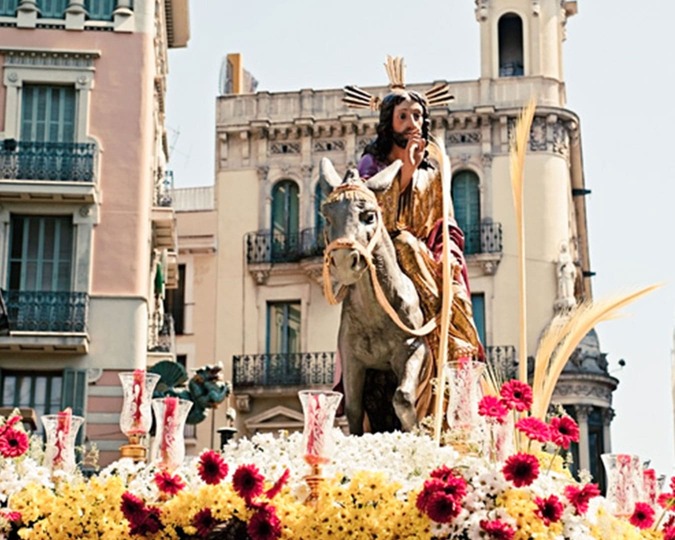
Holy Week is between Palm Sunday and Easter Sunday. These religious celebrations take place the last week of Lent between the months of March and April. These feast days have been turned into occasions for family gatherings with big meals and typical presents, such as palms and Easter cakes, or mones in Catalan. Barcelona also holds processions that stage moments in the life of Christ, copied, in part, from Andalusian customs. Very cool to watch them go by or even join in at the back. Holy Week is the Christian festival that recalls Christ’s last moments on Earth. In 325 AD the Council of Nicaea set the date for Easter in the whole of the Western Catholic world. Since then, each country has developed its own celebrations keeping the main aim of celebrating or commemorating the Messiah’s passion, death, and resurrection.
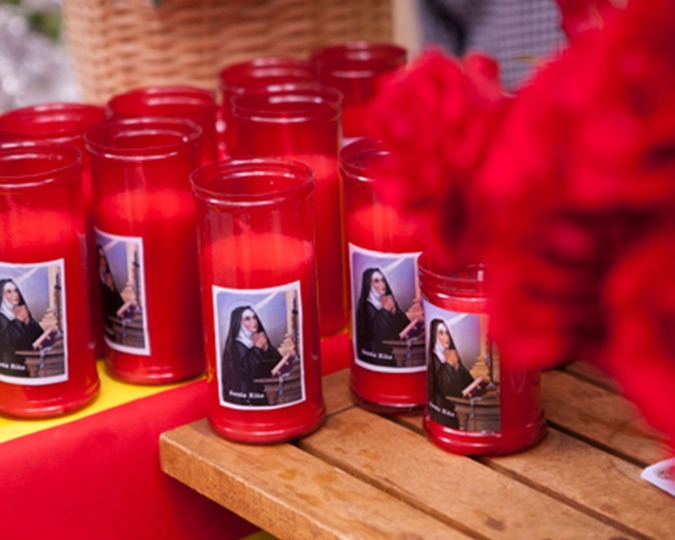
Taking place May 22nd, Santa Rita is the patron saint of impossible things, and rose hawkers, is the biggest popular religious celebration in the Raval neighborhood. Thousands of locals make their way to the Església de Sant Agustí to venerate the saint’s remains and take her roses as a reminder of one of the miracles attributed to her: making the rose bushes in the convent’s garden bloom in the middle of winter. All-day you will find stalls selling roses across the city and join in. Rita of Cascia lived between the 14th and 15th centuries and died on 22nd May, the date chosen to pay tribute to her.
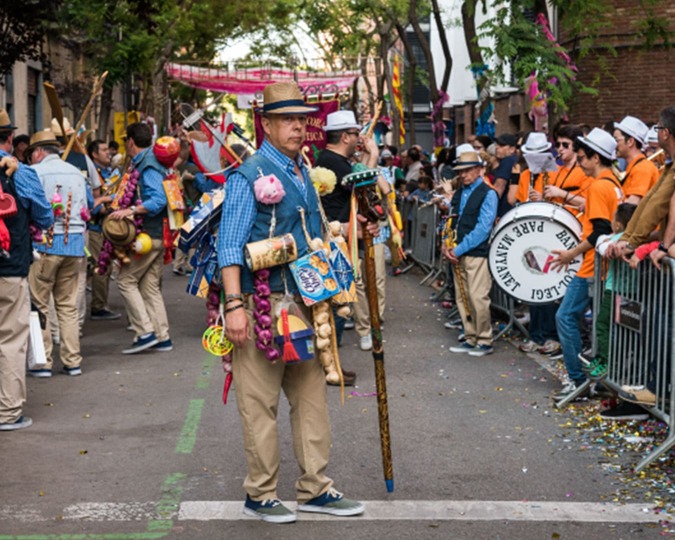
The Cors Muts (Silent Choirs) festival has very strong roots in some Barcelona neighbourhoods and takes place on Whit Monday and the weekend before. These humorous choirs, from Barceloneta and Raval, are formed by men who organise cercaviles – musical parades – and other activities in their respective neighbourhoods. Over the years two factors have combined to shape this festival of the “mute” choirs, so-called now because now they don’t sing. They were inspired by the musician, poet, and politician Josep Anselm Clavé in the middle of the 19th century. He wanted to create an entire cultural movement to give workers something to do when they finished work, instead of like most of us, spending hours in the pub.
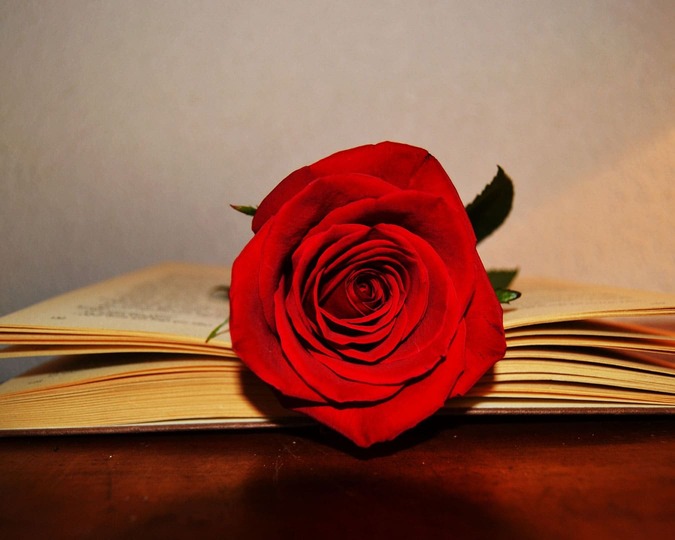
Sant Jordi, or St. George, is the patron saint of Catalonia (among other places) and the Diada de Sant Jordi, St George’s Day, is a festive occasion that, over the years, has become a celebration of Catalan culture. This is why many balconies in the city are decorated with the senyera, the Catalan flag, as they are on other key national dates. In fact, it is a celebration of culture and love, represented by books and roses. The main meeting point in Barcelona is the Rambla, which is packed from end to end with book and flower stalls. On Sant Jordi’s day, it is normal to find books in every language that talk about Catalonia but there are lots of stalls that specialise in books in Catalan, especially as this day is seen as a time for promoting and defending the Catalan language and culture. I should note this is like Catalan Valentine’s day. It’s customary to give a book and a rose to your partner so if you’re traveling alone… It’s a good opportunity for an ice breaker.

The 15th March is an interesting one. Santa Madrona is a parish church in Poble-sec, on Carrer de les Tapioles, which organises the traditional gathering in honor of the saint on the fourth Sunday after Easter. This festive gathering is one of the few that survives in the city and it starts with a cercavila, a musical procession involving all the neighborhood’s festival figures, that sets off from Plaça de Santa Madrona and takes the participants to the saint’s shrine on Montjuïc. There the celebrations begin with a communal breakfast and mass. These are followed by activities to liven up the day for young and old alike, including the traditional tombola organised by the Esplai Xerinola, workshops and other activities for kids, and a group lunch to round the day off.
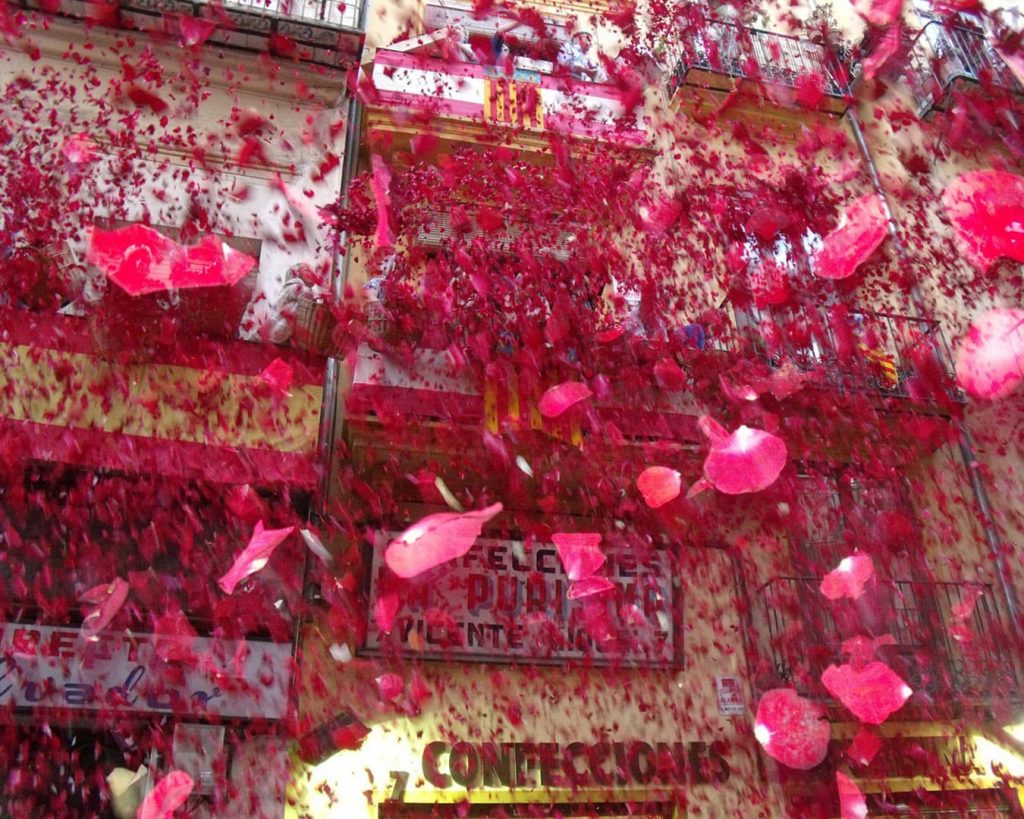
Many years have gone by since Barcelona City Council, in conjunction with the Cathedral of Barcelona, decided to revive one of the oldest and most sumptuous festivals celebrated down the ages in the city: Corpus. And they have done so focusing on two of its most popular and participative aspects, which are the fruit of the collective heritage of the people of Barcelona: ‘l’ou com balla’ -the dancing egg- and the procession. Corpus Christi has long been celebrated in Barcelona. The city is decked out to take part in a demonstration of this rich, popular tradition. We encourage you to make the best of this 700-year-old historic festival full of symbolism!

The St. John’s Eve celebrations are held across the country and take many forms. In Barcelona everyone celebrates in their own way, with neighbors, friends, and families getting together for an evening meal, to play music and light bonfires. The night of 23rd June is a magical night celebrating the summer solstice, just a couple of days late. The Catholic Church combined it with a celebration of the birth of St. John the Baptist, so it has become a festival marked by symbolic elements and customs: the purifying fire, midnight bathing, the herbs of Sant Joan, songs, dances, cures, and other ritual magic.
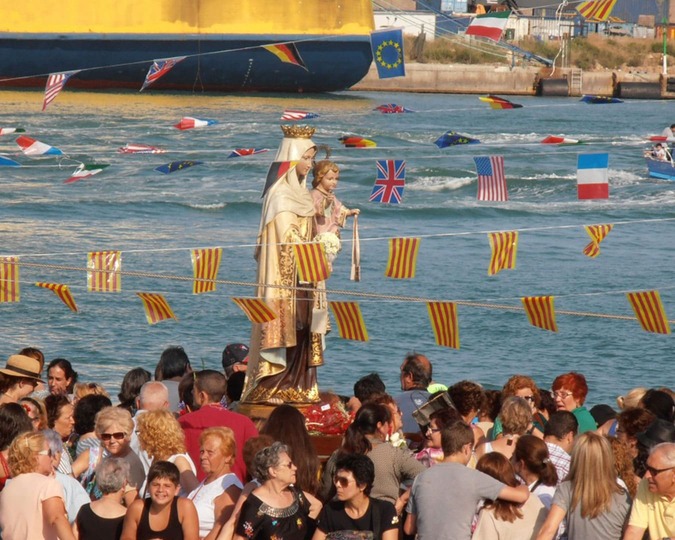
The festival is marked in Barceloneta, the city’s quintessential nautical neighbourhood. Organised by the local fisherman’s fraternity, which every year, on the first Saturday after 16 July, takes the image of the saint from the local parish church out around the neighbourhood in a procession. After going around the waters of the port, the saint is placed on an improvised altar on the wharf while mass is held and offerings are made to her. Finally, the festivity concludes with a performance by a Barceloneta choir, a very traditional element in the neighbourhood.
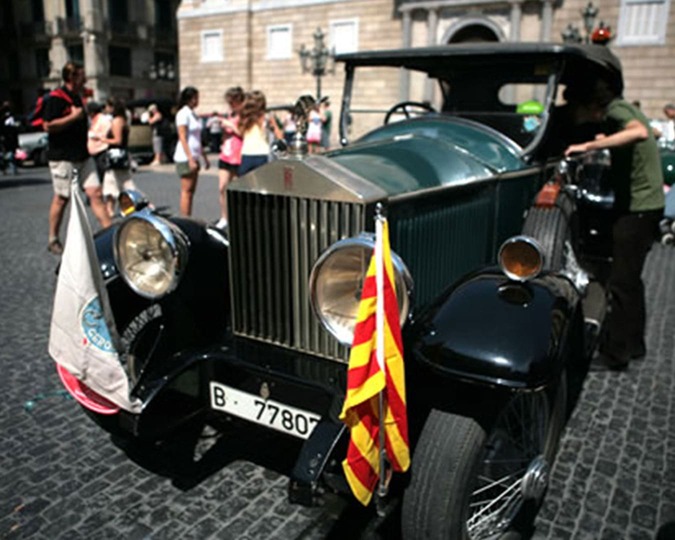
This one’s for Sant Cristòfor, or St Christopher, the patron saint of cars and protector of travellers. The celebration on Carrer de Regomir, on the 10th July just outside the chapel dedicated to the saint, is an important day for car lovers. During the day, bikes, cars, and motorcycles pass in front of the chapel so they can be blessed and enjoy St Christopher’s protection throughout the year. The priest sprinkles holy water over the vehicles that approach and hands each rider and driver a sprig of lavender, a commemorative souvenir, and a picture of the saint.
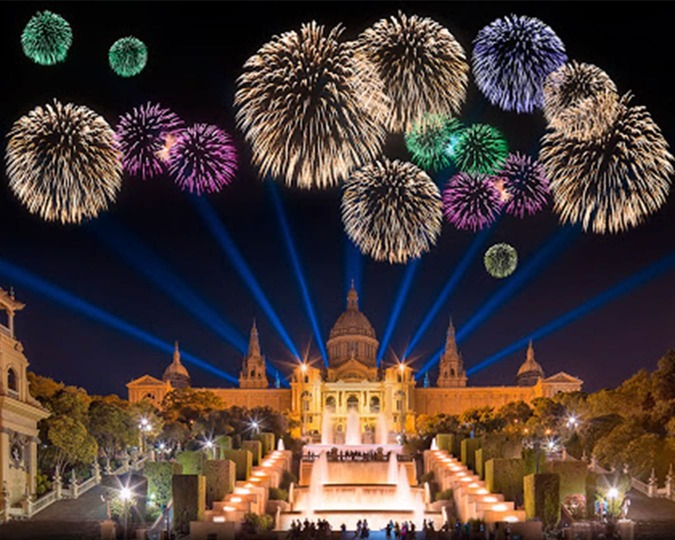
One of the big ones. The festival of Mercè, the patron saint of Barcelona, is celebrated each year around the 24th of September in squares and streets across the city.
It is a short but intense festival, chock-full of diverse cultural activities for all ages. Among the many events, highlights include the morning of the festa major, the main day of celebration, the Mercè cavalcade, the huge correfoc fire run, the procession of Gegants i Nans (giants and dwarfs), the human towers, and the dances from around Catalonia. Also important are the many and varied cercavila parades. This is one of the oldest traditions in the city, descended from the Corpus Christi processions which were already taking place as early as the 15th and 16th centuries.
Come find us in Barcelona!
All Saints is Autumn’s most eagerly awaited festival. At this time it is the custom for people to take flowers to the cemetery, eat chestnuts, and make little marzipan cakes.
All Saints’ Day is coming to town, the autumn’s long-awaited festival
All Saints’ Day is our longest-awaited autumn festival, during which we follow the custom of eating chestnuts and making panellets or small marzipan pastries. But the festivities are also that time of the year when we remember our dearly departed and go to the cemetery to bring them flowers. In fact, All Saints’ Day is on 1 November, when we eat chestnuts and panellets. The following day, on 2 November, is All Souls Day, when we visit the dead in the cemetery and theatre performances are given.
All Saints’ Day is that time of the year when the weather starts to get colder and the days shorter; and nature, now that summer is over, appears to enter a period of death. This is why it is not surprising that many cultures have established a day around this date, since time immemorial, for remembering the dead. The All Saints’ Day festival is actually a Celtic legacy. The Celts held the Sahmain festival in honor of the dead on 1 November, being the start of the darkest period, a time they regarded as magical given that they believed links were established between the respective worlds of the living and the dead.
All Saints’ Day, the feast of the dead
All Saints’ Day is a festival during which we remember the dead. Hence the custom of going over to the cemetery and visiting our forefathers’ graves and tombs, of tidying them up and decorating them with flowers. This tradition is strongly linked to Christianity but the cult came from ancient Celtic beliefs.
Barcelona’s cemeteries extend their opening hours to attend to the needs of the public during the All Saints’ weekend. Transports Metropolitans de Barcelona likewise beefs up its bus service connecting the city’s main cemeteries.
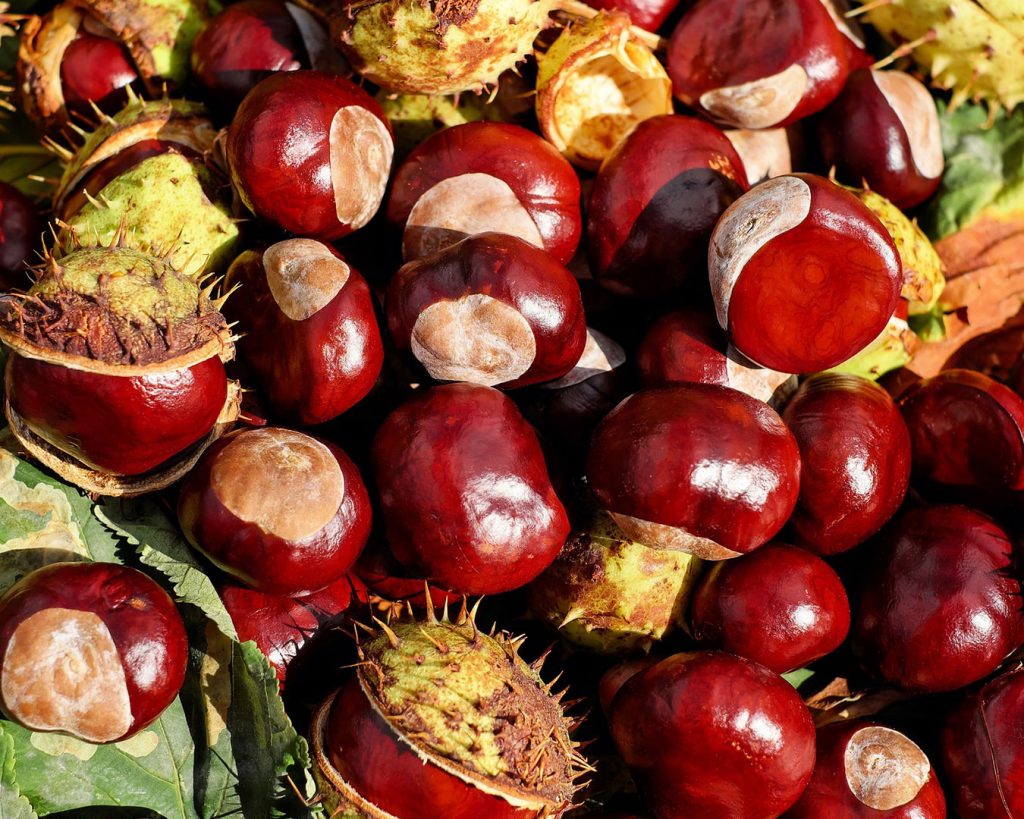
Where can we buy chestnuts and sweet potatoes?
One of the most distinctive features of the All Saints’ Day festivities are the stalls that are put up at various spots in the city, selling paper-wrapped toasted chestnuts and sweet-potatoes cooked over embers. More than 30 of these will be put up throughout Barcelona’s ten districts. Below are the locations for 2020 as they haven’t released 2021 yet – they should be about the same but we’ll up it as soon as possible.
- Ciutat Vella
– Avinguda de Francesc Cambó, 16 (Map +)
– La Rambla, 120 (Map +)
– Passeig de Joan de Borbó, 1 (Map +)
– Pla de la Boqueria, 3 (Map +)
– Ronda de Sant Antoni, 102 (Map +)
– Ronda de Sant Pau, 76 (Map +)
- Eixample
– Carrer d’Aribau, 2 (Map +)
– Gran Via de les Corts Catalanes, 522 (Map +)
– Rambla de Catalunya, 2 (Map +)
– Passeig de Sant Joan, 2 (Map +)
- Sants- Monjuïc
– Carrer de la Creu Coberta, 24 (Map +)
– Carrer de Vila i Vilà, 101 (Map +)
– Plaça de Sants, 1 (Map +)
- Les Corts
– Avinguda Diagonal, 589 (Map +)
– Avinguda Diagonal, 668 (Map +)
– Carrer de Déu i Mata, 49 (Map +)
- Sarrià- Sant Gervasi
– Carrer Major de Sarrià, 1 (plaça d’Artós) (Map +)
– Carrer de Muntaner, 331 (Map +)
– Plaça d’Adrià, 1 (Map +)
– Plaça de Joaquim Folguera, 3 (Map +)
- Gràcia
– Avinguda de la Riera de Cassoles, 66 (Map +)
– Carrer de Bailén, 207 (Map +)
- Horta-Guinardó
– Carrer del Tajo, 37 (Map +)
- Nou Barris
– Passeig de Valldaura, 183 (Map +)
– Passeig de Verdum, 55 (Map +)
– Plaça de Francesc Layret, 1 (Map +)
- Sant Andreu
– Passeig de Maragall, 160 (Map +)
– Passeig de Fabra i Puig, 116 (Map +)
- Sant Martí
– Avinguda Diagonal, 26 (Map +)
– Avinguda Diagonal, 211 (Map +)
– Carrer dels Enamorats, 154 (Map +)
– Carrer de Llull, 386 (Map +)
– Carrer de Pallars, 63 (Map +)
– Carrer de Pallars, 218 (Map +)
– Rambla del Poblenou, 57 (Map +)
– Rambla del Poblenou, 124 (Map +)
The Christmas cycle is a period that runs from the Feast of St Nicholas – 6 December- to Candlemas -2 February-, which is when the nativity scenes are taken apart.
Tres Tombs de Sant Andreu de Palomar
The main event of the Tres Tombs de Sant Andreu de Palomar festival is a musical parade of animals, either being ridden or pulling carts and coaches around the neighborhood’s central streets and squares.
Sant Antoni Bonfires, from sa Pobla to Gràcia
The Sant Antoni bonfire festival held in Gràcia is actually a Majorcan tradition that has been brought to this Barcelona neighborhood. It consists of exhibitions of popular culture from the Principality and Mallorca.
Carnival depends on the lunar calendar and also has to fit into a whole cycle with its own significance, the cycle that precedes Lent.
It has long been a tradition on 28 December, Holy Innocents’ Day – Dia dels Sants Innocents- to play practical jokes ‘innocentades’ on family, friends, and acquaintances.
The main event of the Festa dels Tres Tombs de Barcelona is a musical parade of animals – horses, donkeys, and mules – in a cavalcade and pulling coaches around the city center.
The Tres Tombs Infernals is a celebration held in Sant Andreu de Palomar that combines street theatre and a firework display with a correfoc fire run.
The Santa Eulàlia festivities, also known as La Laia or as Barcelona’s winter festival is held around the 12th of February each year in squares and streets all across the city.
Sant Medir is one of the most deeply-rooted festivals in the old town of Gràcia. It is best known for the tonnes of sweets and toffees thrown to the public from the horses, floats, and lorries in the procession.
